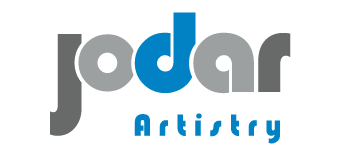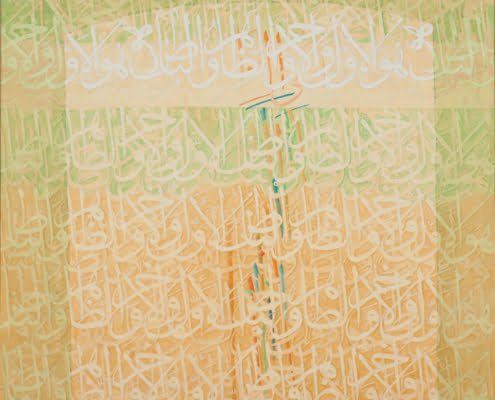Aziz Amoura
Pillars of Fine Art Movement in Jordan
PALESTINE 1944 – JORDAN 2018
“Born in Tira-Hifa in Palestine, 1944, Aziz has been drawing since early childhood. His uncle was a portrait artist who lived in Syria. […]
Aziz Amoura has long been recognized for his talent in portraiture and it is thus very interesting to see his new work, beautifully executed watercolors that play with the curving shapes of Arabic calligraphy. Using poetry and verses from the Koran Amoura has built up the washes of colour around them layer upon layer to create a rich transparent base of delicate colours. The letters seem to float above this background, their shadows dropping down behind them like echoes in a valley. The combined effect is to create a depth in his work rarely possible in this medium and one that gives his paintings substance and presence. Although low key in character, it is Amoura ‘s small black and white graphics that draw you to them first. Composed entirely of tiny dots of black china ink, whose intensity conveys light and shade – a very effective but not a new technique, it being more commonly employed in architectural rendering – these drawings depict, with great simplicity, female figures.
Whether in groups or alone these figures, with their huddled postures, universally convey a sadness, an immense sorrow that is combined with the lethargy of despair. Their suffering, however, is not the kind that wails and tears its hair, not the real physical agony and pain of the recently bereaved, but a patient kind of suffering, a suffering that has gone on for so long that no one can remember its beginning or foresee its end. So although seemingly removed from reality and closed in on themselves allowing no stranger, no outsider to know the real depth of their grief, these figures nevertheless exude an acceptance of things as they are and through this have achieved a rare and deep serenity that offers hope and consolation. Amoura has understood that only women are capable of this kind of emotion, for it is they that bear the burnt of all suffering inflicted in a male dominant world.
Amoura has also given us a clue to what is going on inside those heads, so gently supported by uplifted knees, for above them outstretched female figures lie, some wrapped in the shrouds of death, others often with bellies swollen round with the unborn child apparently peacefully yet eternally asleep. The thoughts of others are expressed in words written in the curving flowing letters of Arabic calligraphy that somehow manages at the same time to give the impression of a city skyline of ruined buildings whose jagged fingers of remaining brickwork point upwards accusingly.
What Amoura has done, many artists have tried to do before, but none has ever managed to pull it off so successfully. Obviously, the lack of colour helps a great deal with the somber mood of the drawings, but ultimately it is Amoura’s immaculate sense of composition which consists of a sophisticated play of off-centre horizontal and vertical elements, and the subtlety that comes from simplicity that manages to express so much. Amoura has also understood that suffering need not solely be conveyed by writhing, entangled and emaciated figures. When crowded together, Amoura’s figures are merely clod, their echoing shapes and forms repeating and reiterating the others mood and thoughts. They seem to take comfort from the warmth derived from the contact between their living bodies like birds do on a snowy day, their unity protecting them from the cold fear of the unknown, of death. Whether clothed or naked, the limbs of Amoura’s figures are round, sensual and strong and impression often conveyed vividly yet simply by a single row of dots that thread their way along the contour of an arm or thigh.” Meg Abu Hamdan, Jordan Times, 2002




